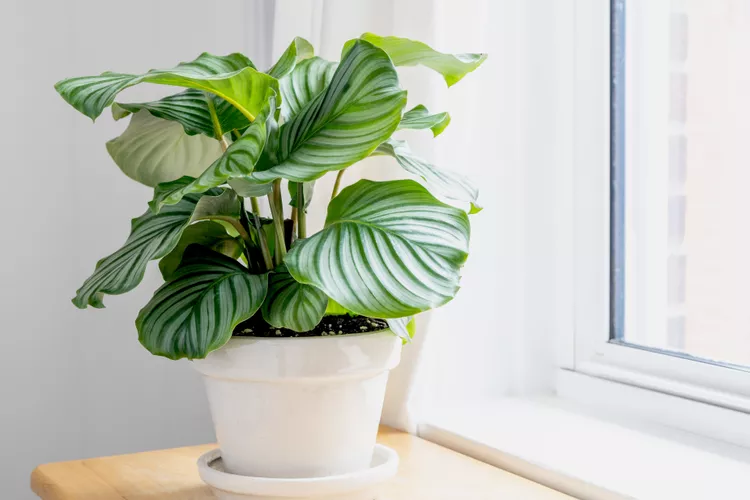
These gorgeous pieces may bring a splash of color and texture to any room in your house. Even the undersides of the leaves can be visually interesting since they sometimes offer a vibrant splash of color that is visible at night.
Getting the hang of caring for these tropical plants can be challenging. Although calathea plants are picky about the care they receive, once you have them down, you will be rewarded with vibrant colors and the soft sway of the leaves.
Some people refer to calatheas as prayer plants (much like the very similar, but different maranta plants). These indoor plants are recognised by this term because of their distinctive movements, or nyctinasty.
Care

Light
A prayer plant will thrive in an area with medium to strong indirect light. Calathea can tolerate low light, although more light can keep the foliage’s vibrant colors and patterns. The detrimental effects of direct sunlight may include color fading.
Water
Calathea plants require a lot of water. When the top inch of soil is dry, give these indoor plants a thorough watering. Calathea houseplants thrive on soil that drains properly and in drainage-equipped pots. While calathea are certainly thirsty houseplants, they still like to dry out a bit between watering.
When watering calathea, the type of water utilized can have an impact. Tap water may contain various minerals or substances that can harm leaves. If the leaf edges are brown, the water may be high in salt or contain chlorine, chloramine, bromide, or fluoride. If you believe tap water is unsuitable for your calathea, it may be preferable to water the plant with filtered, distilled, or water retrieved from a dehumidifier.
Soil
The ideal growing medium for all calathea is potting soil, which is rich in minerals and organic matter but yet has the capacity to drain properly. The majority of coco coir or peat-based potting soil blends are sufficient, but check to make sure they don’t contain water-retentive crystals, as these might keep the soil perpetually damp and cause root rot. Try making your own potting soil if you’re feeling daring!
Temperature
Calathea prefer warmer climates because they are tropical plants. These indoor plants won’t worry if it becomes warmer and the temperature rises towards 85°F; a typical room temperature over 65°F is OK. Calathea plants should not be placed next to outside doors, draughty windows, or vents, especially in the winter. During the warmer months, be sure to keep your positioning away from air conditioning vents.
Humidity
For calathea, high humidity is essential. If there is not enough humidity, the leaves may start to curl or the edges may become brown and dry. In a kitchen, bathroom, or any other location where the air is very wet, Calathea indoor plants thrive. Calathea can benefit from additional wetness, which can be provided by a humidifier or a pebble tray filled with water. Find out how to make the air around your indoor plants more humid!
Fertilizer
Depending on the kind, fertilizing your calathea might encourage new growth and even blossoms. A full-strength liquid fertilizer that has been diluted is a terrific choice. You can also add worm castings, fish emulsion, or seaweed to the soil when repotting. Fertilization will help Calathea during the growing season. In the winter, when the plants are dormant, there is no need to fertilize these indoor plants.
Table





